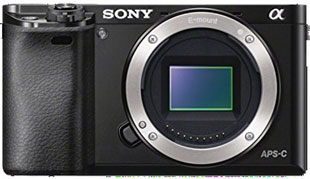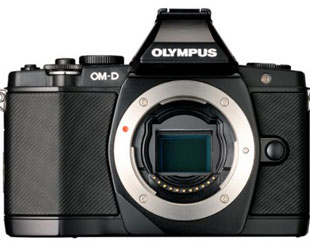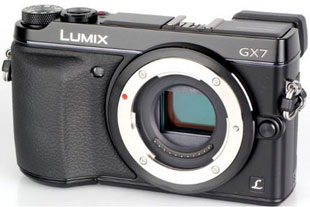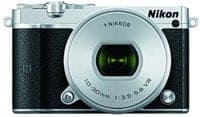For years I have cautioned readers of Improve Photography to be cautious about jumping into the mirrorless camera world if you are coming from a full frame DSLR. However, in the last few months, mirrorless cameras have improved enough to finally make them a reasonable switch for the majority of DSLR shooters.
I have been watching the mirrorless system and testing many of them, but it wasn't until I got the Fuji XT1 with the new version 4 firmware that I was finally convinced to make the change.
The experience I hear from many DSLR shooters is that they buy a mirrorless camera and shoot it for a couple weeks and really like the lightweight form factor and the features of an LCD viewfinder… and then realize it has been two months since they picked up the big, bulky, heavy DSLR. That was my experience as well.
Fuji XT10 – Best mirrorless camera under $1,000
The Fuji XT10 is my favorite mirrorless camera under $1,000, and by a significant margin. The Fuji XT10 is an APS-C size sensor with 16mp of resolution in a small, but not awkwardly small body. Fuji uses the benefits of the mirrorless form factor to add a faster frame rate than most DSLRs, a fantastic viewfinder, and many little features that convinced me to switch to Fuji from my full-frame Nikon.
One reason to love Fuji is that the company is not proliferating camera bodies, but instead is releasing free firmware updates to their customers to improve the functionality of their cameras long after purchase. For example, Fuji released four major updates to the Fuji XT1, that made it feel like a brand new camera with each update, which could be freely downloaded from their website and installed on your camera. Unlike Canon and Nikon which rarely release firmware updates with new features, Fuji has gone above and beyond to please their customers after the sale.
I like the APS-C (crop sensor) format of the Fuji XT10 as well as the Sony A6000 and Samsung NX500. I personally believe that the balance between a large sensor size and physical weight of the camera and lenses is about perfect on the APS-C format.
I love the controls of the Fuji cameras, with separate dials for everything. Because there are dials for each player in the exposure triangle, you can set any one to auto or a fixed number at any time. So you don't even have to think about whether you are in shutter priority mode, aperture priority, or manual. The camera takes that over for you, and it works beautifully.
Fuji also has a very strong lens system, with very high quality lenses which are the equivalent of the lens trinity in the full frame system. I recently recommended the Fuji XT10 to my sister-in-law who wants to shoot more weddings, but was discouraged when she learned that most pro DSLR photographers shoot with a full frame camera and the lens trinity, which costs a total of about $8,500. She could get a Fuji XT10 and the Fuji lens trinity for $4,000. Certainly, no photographer needs to spend that much money to start, but as she reinvests some of the earnings from her portrait business, she has an attainable goal of the kit she eventually wants to shoot.
The big brother of the XT10 is the XT1, which costs a few hundred dollars more, but as you can see in my comparison post between the two cameras, they are nearly identical cameras. So you can buy the XT10 without any reservations.
It may be strange to consider a Fuji camera. They don't have the brand recognition that Canon and Nikon have for digital cameras, but over the last couple years they have made incredible advances. In fact, it is good enough that it replaced my MUCH more expensive full frame Nikon D810.
The Fuji XT10 is well under $1,000, but you can check the current price of the camera on Amazon by clicking this link. Be sure to check for lightly used cameras, which you can often find at great prices by checking the right hand column of the Amazon listing.
 Sony A6000 – Best priced mirrorless camera
Sony A6000 – Best priced mirrorless camera
Sony is the camera company to watch in 2016. They are expected to release the A7000 camera which looks very promising from the leaks so far, as well as the very expensive and heavy (and awesome!) A7RII.
But the current version is the A6000, which is a very inexpensive camera body with loads of excellent features.
The achilles heel of the A6000 is autofocus, which is quite sluggish. It's on par with the autofocus of the Fuji XT1 when it was originally released, and before the many firmware updates made the autofocus on the Fuji significantly better. If you shoot almost all still subjects, the A6000 is a great camera, but if you need faster autofocus, you've been warned.
Despite the slow autofocus, the A6000 is an incredible camera. It uses a 24 megapixel APS-C sensor and shoots 11 frames per second, includes wi-fi and NFC, has a tiltable LCD screen, and is very lightweight.
Choosing between the Fuji XT10 and the Sony A6000 is a tough call, but I generally feel that the XT10 is a superior camera for its much improved autofocus, and excellent controls.
You can check the current price of the Sony A6000 on Amazon.com.
 Olympus OMD EM5: Best micro 4/3 camera under $1,000
Olympus OMD EM5: Best micro 4/3 camera under $1,000
Olympus and Panasonic use a micro 4/3 sensor size, which is significantly smaller than APS-C (crop sensor). Sensor size is not everything, and several well-known professional photographers I know use the Olympus cameras as their primary cameras. I wouldn't recommend micro 4/3 for night photography, but it will do just fine in moderate low light situations.
One of the biggest benefits of the micro 4/3 system is the amazing and robust lens system choices. Since more than one manufacturer makes micro 4/3 lenses, it is a competitive market with very inexpensive and very high quality lenses. Buying into the micro 4/3 system will save you tons of money down the road on lens purchases.
The 16 megapixel EM5 offers some cool features over the EM10, which is a very similar camera. The EM5 packs in-body image stabilization and a weather sealed body.
You can check the current price of the EM5 on Amazon.
 OMD EM10
OMD EM10
The EM10 is a very similar camera to the EM5, with just a few key differences. The benefit of the EM10 over the EM5 is that it has wifi and a physically smaller and lighter weight body size.
The EM10 is also less expensive than the EM5, which will leave you some extra room in your budget to purchase lenses.
You can check the current price of the EM10 on Amazon.
 Panasonic GX7: Best mirrorless camera for video
Panasonic GX7: Best mirrorless camera for video
Panasonic is best known for its video system, which is best in the business. However, their cameras are no slouch in the still photography department either.
The GX7 uses a predictable 16 megapixel sensor with in-body image stabilization in a micro 4/3 system.
The GX7 has already been replaced with the GX8, but the GX8 is a bit above the $1,000 budget I promised in this article.
One caution on the Panasonic system is a somewhat buggy interface. While talking with a Panasonic rep not long ago, the rep had to reset the camera three times because it kept exhibiting odd bugs in the firmware.
 Samsung NX500
Samsung NX500
I love the Samsung NX series of cameras. They have unbelievable spec lists, and Samsung makes the best connected cameras on the market.
The real failing of the NX500 has nothing to do with the camera at all–it's the lens system. Samsung makes decent lenses, but most of them are not on par with the Fuji or micro 4/3 offerings. However, with the release of the Samsung NX1, Samsung is signaling a shift toward the higher-end that will hopefully drive them to beef up its lens offerings.
I bought a Samsung NX for a trip to Costa Rica a year ago and it performed quite well. It's an excellent form-factor, easy to use even for beginners, and shoots a nice image.
 Nikon 1 V3 – Best mirrorless camera for wildlife and sports
Nikon 1 V3 – Best mirrorless camera for wildlife and sports
Just in case you want a mirrorless camera that you can awkwardly match with a massive DSLR lens and shoot 20 frames per second, Nikon made the Nikon 1 V3 for you. You should also know that you'll be the first customer of the Nikon 1 V3 when you buy yours, because nobody else wants one.
Okay, that was perhaps a bit too harsh. The Nikon 1 is actually a pretty cool camera.
But the camera has not taken off, largely due to several negatives. There is no included viewfinder (what were they thinking!??!), it uses a minuscule and easy-to-lose micro SD card, and it makes Nikon shooters use a new battery. Aside from that, the whole camera feels “amateur.” There is not nearly the buttons and controls that advanced shooters like to see on the camera body, which really slows down the shooting process–especially the aperture dial which is tucked in and difficult to access.
I'm torn on the Nikon 1 system. It's a very capable camera that in many ways exceeds what other companies are offering in mirrorless, but it seems that Nikon is protecting its turf by not making the small mirrorless offering compete for the attention of serious photographers (who buy much more expensive cameras).
The Nikon 1 system uses a CX format image sensor which is smaller than APS-C (crop sensor). An APS-C sensor is about 23mm x 14mm, while this camera's sensor is only 13.3mm x 8.8mm. That's TINY, and it makes for not-so-great low light shooting.
Olympus E-PL7
The Olympus E-PL7 is one of the most gorgeous camera designs on the market. It looks absolutely gorgeous in its retro styling, but there is no built-in viewfinder which is a deal breaker for many photographers like myself.
Being a micro 4/3 camera, you'll have inexpensive and high quality lens options galore. However, the camera just doesn't have the controls that serious photographers want. It's an excellent consumer camera for the dadtographer or momtographer, but the camera is too cumbersome for adjusting exposure on the fly.
 Nikon 1 J5 – The cheapest way to shoot quality 4k video
Nikon 1 J5 – The cheapest way to shoot quality 4k video
The Nikon 1 J5 is not all that different than the V3, but hits on different points that are less appealing to still photographers. First of all, it can shoot 4k video.
There is no viewfinder and no optional accessory viewfinder, so I can't see any serious still photographers considering this camera. Also, there are even fewer control dials than on the V3.
Samsung NX300
The Samsung NX300 is the little brother of the NX500. It's a nice camera with good connectivity and form factor in an even less expensive package. It wouldn't be my first choice, but it's still a good option for those very price conscious purchasers.








Great post! Could you publish a detailed comparison between XT-10 and Sony A6000? I’d appreciate a notification when and if you do that. Those two seem to be the best picks for someone trying to step into the mirrorless market for the ease of use. 🙂
Hi, great article – thanks. Do you have any cheap recommendations for flash triggers? 🙂
janina – check out the FlashQ kits.
I bought a couple of these to sync my XPRO-1 and Nikon SB 800. It’s a manual solution, but I am very satisfied with the performance particularly at this price point.
[link removed as violation of comment policy]
I love the Sony A6000 ;its an amazing camera. As if it wasn’t amazing enough of a camera for photos its also and amazing video camera too. I have been amazed by how awesome that camera is for the price. There are some flaws with it . . . the biggest is battery life. I highly recommend getting a extra battery or two to keep with you when you’re out shooting. I took it on the trip to the zoo with a full battery, I only used the evf for composing and reviewing. I turned it off if I knew it was going to be a little while before I needed it again. Even with all that – it barely lasted 4 hours. When we stopped for food I had a chance to recharge it. But I ended up having to get a couple of extra batteries.
I love it for a walk around camera. Even with the kit lens (I also have the zeiss 16-35mm F4 and the 70-200mm F4 full frame lenses) it does a beautiful job. Sony is light years above and beyond the other manufacturers. Nikon and Canon need to get themselves together. If I wasn’t already heavily invested in Nikon glass I would totally be a Sony fanboy.
did you have lens recognition issue?
Thank you, thank you, thank you…..
I LOVE my Fuji XT10, and I have been a die hard Cannon user for over 35 years! But I love this new Fuji all the bangs and whistles are awesome but I appreciate the faster frame rate, light weight body (thanks fuji, those cameras DO get heavy) and the ability to adjust the camera as I see fit!!!
Great review, thanks for talking about this awesome Fuji camera
Tammy ?
I own both a Sony A350 DSLR and a Samsung NX300M Mirrorless Camera and am learning both. Being a beginner at digital photography it is challenging at the moment so I’ve invested in the Improve Photography course as well. I’m grateful that the NX300 was mentioned here and hope to master it soon as well as my DSLR of course.
I have a Canon 7D with a 70-200 Is lens, (+ others) which I won’t at this stage be parting with as I use it taking action sailing shots (from a RIB) and motorsport.
Have just purchased an XT10 with the 18-55 lens and am amazed at its quality (our son-in-law said I would be, he has an XT1)
Still learning what I can do with it, and hopefully this website will give me some pointers to help me improve.
It is so easy to carry around, takes cracking photo’s and is not too small for my big hands.
Appreciate that the XT10 is not as waterproof as my canon, but thats not why I bought her.
In time I’m sure I will drift away from the heavier bulk of the DSLR but definitely not yet. Might well P.Ex a couple of my least used lenses to buy another Fuji when I know which one to go for. Decisons – Decisions!!
With a K&F convertor I can use my Canon nifty 50 & others, but only in manual focus mode, no bad thing as it will teach me to brave Manual photography and with luck improve my shots.
I would just like to ask if the no weather sealed case is an issue? I like To go out tothemountainsandtake some shots. How would I be able to get over that? Thanks so much
There might be lots of MFT lenses, but there are very few of high quality. Bought an OMD E10 II recently, but wouldn’t have if not for the Olympus 12-40mm f2.8 Pro lens. Looking at DXOMark scores for most of the others leaves not much else worth buying.
I suggest you look beyond DXO scores for lens evaluations. DXO results are skewed by sensor size and really don’t relate to real world results. The Olympus 12-40 is a great lens and stays on my E-M5 90% of the time, but there are many other great choices in the mFT system as well. The latest 25/1.7 Panasonic is probably the best bang for the buck at $99 for ANY system, and the Oly 45/1.8 is also very sharp, small, and affordable.
QUALITY 4K VIDEO on J5 ? 15 fps is what you call quality 4K ?
Hi, nice article. Do you feel mirrorless cameras ares still way less bulky and this helps on the field?
Jim, I am a new listener to the podcast and just heard you mention this article in the getting ready for fall colors episode.
I am a m4/3 shooter, so now you know my bias.
It sounds to me like you’re commenting on the m4/3 as one who’s read the specs and learned a lot about it without actually using it. Have you used an OMD E-M1? Or any m4/3 bodies for an extended time like you did the Fuji?
Mainly, I beg to differ with this comment of yours: “Olympus and Panasonic use a micro 4/3 sensor size, which is significantly smaller than APS-C (crop sensor).” Actually, the size difference is insignificant when you overlay the two. Mostly it just takes the sides off. Wrotniak has a really good article from many years ago explaining this. I can’t put in a URL, but search Wrotniak and “Sensor Size.”
Lastly, to Nick: I’m doing very well with birds in flight with my OMD E-M1 and the latest firmware release. Others are too.
Wonderful info. Stumbled upon this review while researching Sony mirrorless models. Coming from Nikon background and hearing so much about Sony I thought this was the way to go. I was actually looking at the very expensive Sonly 7ii but not needing the video component was feeling nauseated over the price tag.
Now considering the FujiX10!
Healthy fresh perspective…used a Nikon D50 the ancestor to D3300 for 10 years…great price…some great shots no doubt. Struggled between Sonya6000 and Fujifilm XT10. National Geographic has a article on their best travel cameras and found the XT10 top of their list as well. My best camera was a Contax with two fixed Zeiss lenses 50mm and 28mm- used that for some 25 years. You are correct in evolution marriage of technology and photography on the Fuji. I find the XT10 INTUITIVE…just as photography should be. I am sure the Sony sensor is better but the joy of photography cannot be in finding some hidden adjustment that is randomly found…I imagine that would be frustrating. Sony needs to just get some real photographers to aid their approach I suspect. I would love to see Nikon and Cannon decrease their model selection on focus on appropriate software updates instead. For now its going to be XT10 for me. For those that agonize over equipment of which I too am guilty…best photos are first and foremost composed correctly. Good reading …thanks for the article.
I have a set of Nikon DSLR cameras and lenses and decided to buy the smaller aps-c Fuji XT1 and then an a6000 with great lenses like the sony 50 1.8 I liked the smaller cameras but not the glitchy autofocus, wider DOF and sometimes mediocre metering in settings like aperture priority. I have sold all my mirrorless lenses and cameras and just bought a D7100 for sports or wildlife. The DSLR is still king if you want a camera that works faster and has better battery life. Side by side I’d take the D7100 with a 50mm 1.8 over the a6000 with the sony 50mm 1.8 because the Nikon just plain works better in more demanding situations. The Sony setup is sharp and has some nice features but try tracking your basketball player in a dimly lit gym with it. Way more keeper photos come from the DSLR
I was looking at Mirror-less Cameras… Leica is too expensive.. Thinking of getting a Fuji… Confused between X100t and xt10.. i know xt10 has interchangeable lens so that’s an advantage , tho read some articles on attachable lens for x100t …..what would you suggest to start off with mirror less cameras … x100t/xpro2/xt10